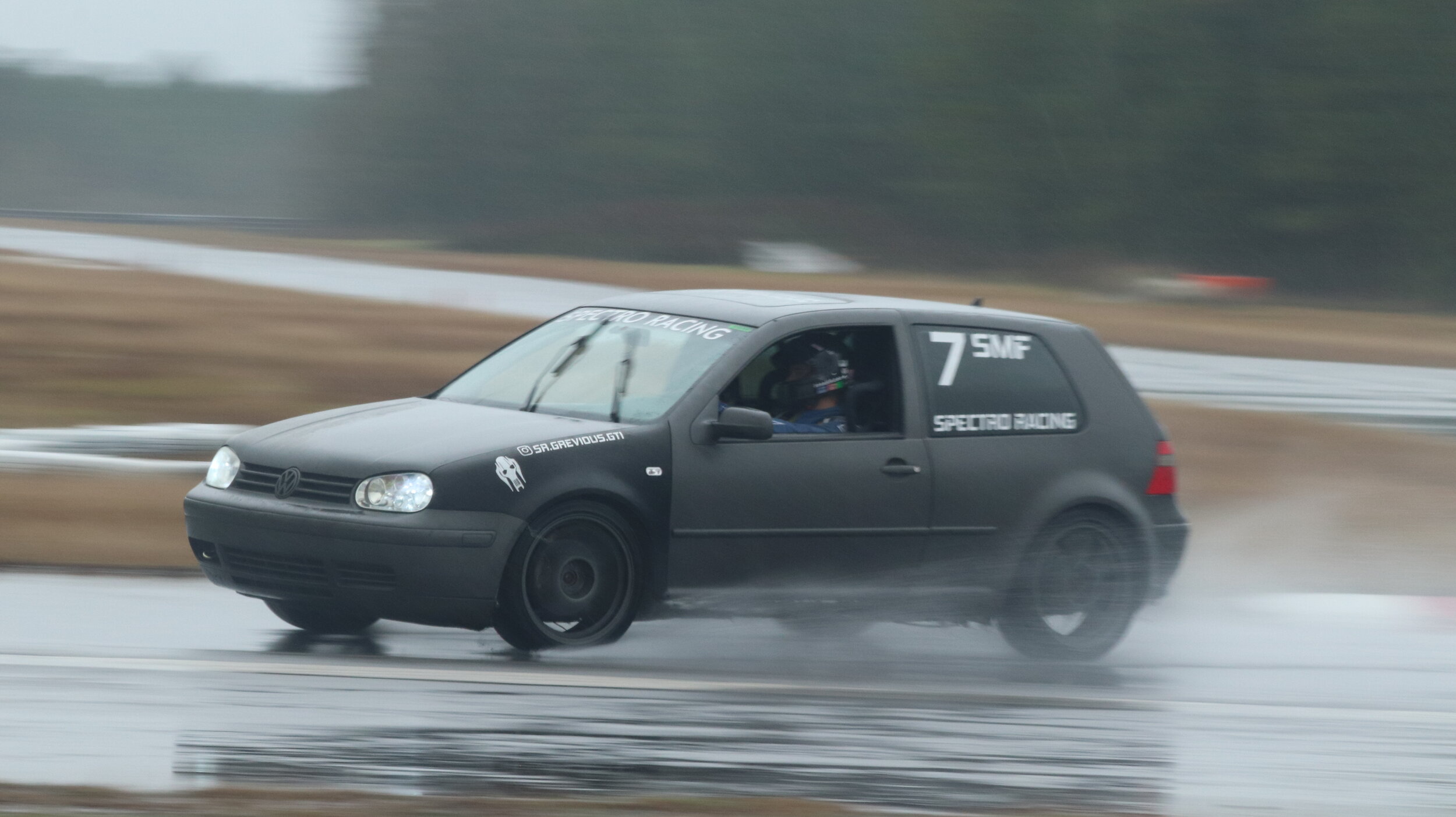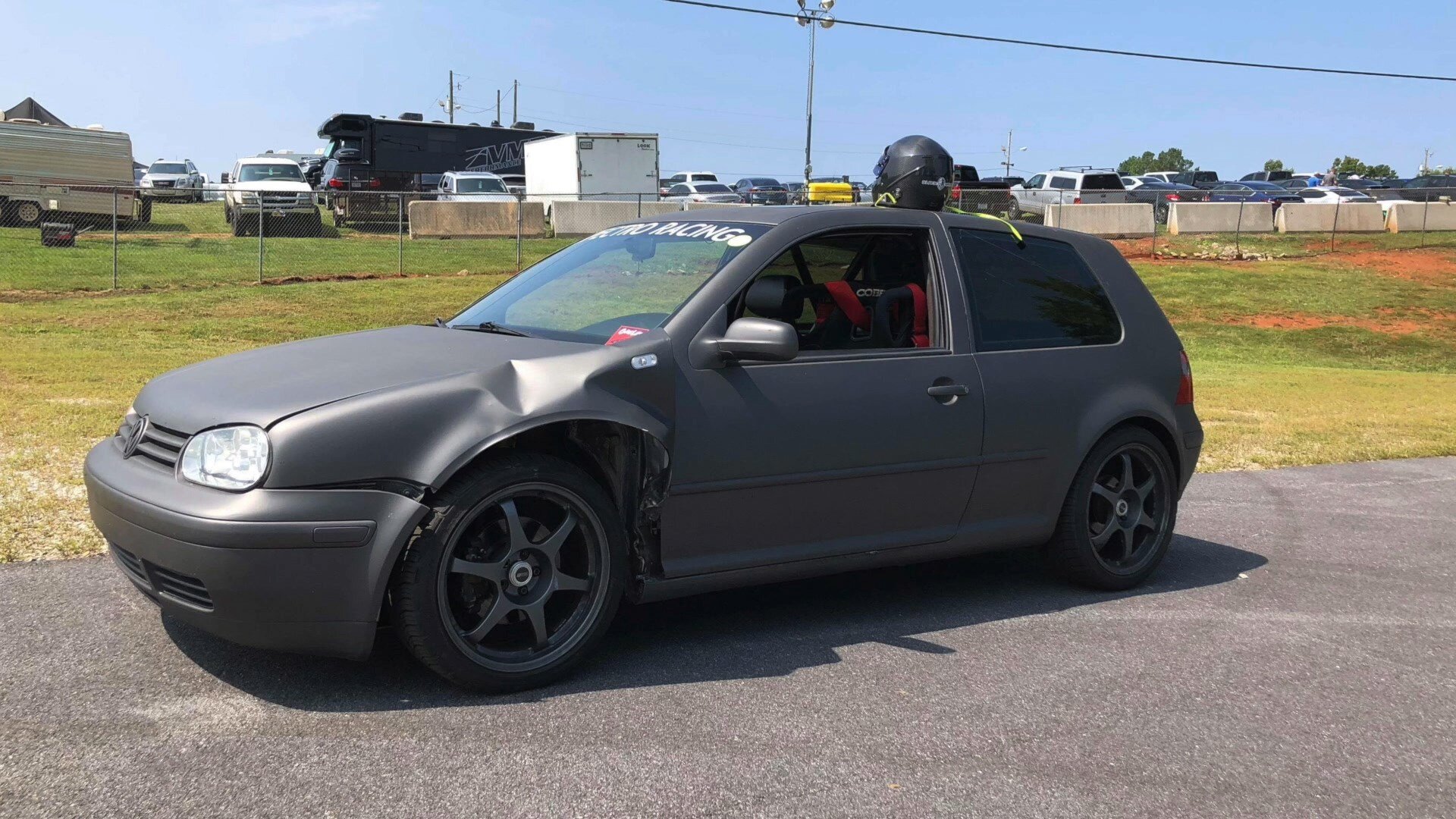Seat time is arguably the most crucial aspect of driver development. While sticky tires or suspension mods might shave seconds off of your lap time, ultimately for improving driver skill it matters less what you’re driving and more how much time you’ve got behind the wheel.
This is why so many experienced track drivers choose to drive a car that is a bit less powerful or exciting than they could otherwise afford: it’s better to get hundreds of laps in a Miata than ten in a Corvette, no matter the lap times. Operating costs of fuel, oil, tires, brakes, etc are all dramatically lower on lighter weight, lower horsepower “momentum cars.”
These days money is tight for many, so how do you squeeze out even more driver development per dollar? I have a formula that I think you’ll find tough to beat.
The first ingredient is having a car that is nice enough to be safe and enjoyable to drive, but beat enough that you don’t really mind if you have to replace a fender or engine. Although the Miata is certainly a popular choice, in my case it’s a MK4 VW Golf GTI. I simultaneously despise and adore this glorious dumpster fire on wheels. It is the antithesis of confidence-inspiring, yet absorbs heaps of abuse with little complaint. There are a ton of great Hondas, VWs, E36 or E46 BMWs, 944s, etc that fall into this category.
The second part is a bit tougher. You need at least one friend that is as nuts as you are and is willing to split the costs of the car and come drive it with you. Track cars are like regular cars in that they spend most of their time sitting idle. Any given driver doesn’t have the opportunity to go out racing every single weekend. Sharing a track car, especially if the owners live close together, splits costs but very rarely reduces the available seat time of any given driver.
The likelihood that you’ll want to drive your shared car but that it will be “occupied” is even further reduced by the fact that it’s often possible for two people to co-drive the same car at events. If you’re creative with autocross classing, you can easily have four people drive a car on a single day, but this is harder at trackdays since the schedules rarely allow time for driver swaps between sessions and never would accommodate two people in the same skill group sharing the same car.
The third ingredient in this seat-time maximizing recipe involves having up to four drivers share the car at a track day. At open track days with fewer overall attendees, it becomes pretty easy for each driver to run as much as they would like to while keeping the car on track for much of the day. At our local stomping grounds, the Florida International Rally & Motorsports Park, a regular open track day entrant can add up to three codrivers for about $80 each. And, if one of said drivers has a Driver’s Club membership as I do, then that means the $240 in codriver fees is all that will have to be paid the whole day for all four drivers combined. Driver’s Club memberships pay for themselves rather quickly for those who are going at least once a month as I do, and this is just another great benefit of the program. You’ll make a lot of friends this way, as an $80 codrive is the bargain of a lifetime as far as trackdays go. You’d be amazed how an average day at the FIRM, even with four people sharing a car, will leave each driver exhausted before the gates close. You’re much more likely to have a mechanical failure than you are to have felt like you didn’t get your money’s worth on seat time.










